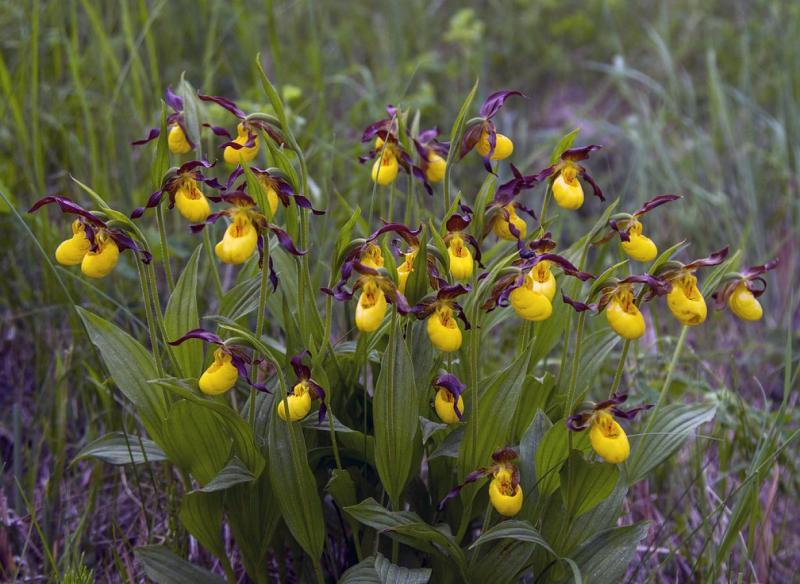Cypripedium parviflorum
Native to: Arizona - United States Arkansas - United States Colorado - United States Connecticut - United States District of Columbia - United States Georgia - United States Illinois - United States Indiana - United States Iowa - United States Kansas - United States Kentucky - United States Louisiana - United States Maine - United States Missouri - United States New Hampshire - United States New Jersey - United States New Mexico - United States North Carolina - United States Ohio - United States Oklahoma - United States Oregon - United States Pennsylvania - United States Quebec - Canada South Carolina - United States Texas - United States Utah - United States Virginia - United States Washington - United States West Virginia - United States Wisconsin - United States
General Information
Cypripedium parviflorum is a sympodial cold to warm growing terrestrial orchid belonging to the sub family Cypripedioideae native to United States and Canada.
Plant Description
Sympodial. Grows to 10-80cm. Each new growth has numerous erect elliptic, lance shaped, oblong shaped, terete shaped leaves that grow to 2-20cm long. Pseudobulbs grow to 80cm. The plant tends to climb or sprawl with each new growth
Substrate(s)
- Coarse
- Perlite
- Sand
Care Notes
These orchids live on the forest floor, often in dead leaves or humus, yet still have the organs that would allow them to store water given unpredictable or intermittent weather conditions. They require some moisture to always be present in the soil, but not much. Water when the soil approaches dryness and don't let it dry out completely. Some growers place pots in saucers to retain water, but this may create an environment that is too wet, leading to rot.
In most areas these can be grown in the garden under trees or in sheltered locations, as long as they are reasonably protected from huge weather swings, excessive heat, and frost.
Climate
Grows at low to high elevations. Rainfall ranges from 25mm to 112mm per day, heaviest in June and lightest in January. Humidity ranges from 60% to 77%, highest in December and lowest in May. Temperature ranges from -14C to 28C, highest in July (17C to 28C) and lowest in January (-14C to -6C).
Fertiliser
These plants do well with slow release fertiliser at the rate of 2-3 pellets per cup (250ml) of media. Additional fertiliser during the growth period may be beneficial, but not necessary.
Be sure to flush out excess fertiliser by running water through the media regularly year round.Potting
These plants can be sensitive to repotting though should not require repotting regularly. Repotting should be done when the mix has broken down to the point that it doesn't absorb water or holds onto water for far too long, usually the plant shows a decline in growth as well.
The mix should be free draining, with a blend of 30% inorganic ingredients such as coarse sand, gravel or perlite, mixed in with about 70% organic ingredients such as peat, leaf litter or decomposed bark. Avoid commercial potting mixes as they can vary wildly and may contain "wetting agents" that can hold onto water for loo long, causing rotting and stunted growth.
Repotting is best done annually.




















